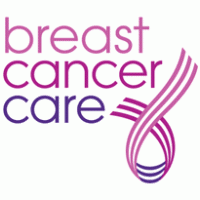Latest News
Dr. Ruhland Encourages Physician Follow-up with Breast Cancer Survivors - A message to physicians
Posted 10/26/17 (Thu)

As many of you are aware, one in eight women will develop breast cancer in their lifetime. Thankfully, the number of breast cancer survivors increases every year.
Regular and consistent follow-up care is essential for all breast cancer survivors, even more so with the growing number of survivors in the state. In recognition of Breast Cancer Awareness Month, I encourage you to refresh your knowledge of follow-up care for breast cancer survivors.
I encourage you to continue working closely with all cancer survivors to help them maintain and achieve better overall health.
I also encourage you to continue working closely with all cancer survivors to help them maintain and/or achieve better overall health. This includes maintaining a healthy weight, eating a nutritious diet, exercising regularly, not smoking, and getting routine screenings for other primary cancers such as cervical and colon cancer.
Follow-up should include regular appointments with an oncologist for lab work and physical exams. Returning patients to the care of a primary care physician to monitor and improve their overall health and wellness is also crucial.
Regular breast imaging follow-up is also an important, but sometimes confusing, part of survivorship care. Imaging follow-up recommendations vary depending on the surgical treatment the patient received.
- Patients who undergo breast conservation therapy should have an annual bilateral mammography, with the first mammogram 6 months after the completion of radiation therapy. Tomosynthesis (3D) mammography would be beneficial if available.
- Patients who undergo a unilateral mastectomy should have annual mammography on the remaining intact breast, with the first mammogram 12 months after their previous mammogram. Tomosynthesis (3D) mammography would be beneficial if available.
- Any abnormality on mammography in these patients should receive additional imaging with breast ultrasound or breast MRI as recommended. Needle biopsy of any suspicious findings should be performed.
- Breast cancer survivors, with remaining breast tissue, can benefit from the addition of annual screening breast MRI. Breast MRI should be performed if the patient is considered high-risk based on factors such as family history or genetic mutations. If the patient qualifies for screening breast MRI, it should ideally alternate with mammography at six-month intervals.
- Patients who undergo mastectomy with or without breast reconstruction should be followed with clinical exams of the chest wall, axilla, and reconstructed breast. Any concerning clinic finding on exam should be assessed initially with ultrasound. Needle biopsy of any suspicious lesion should be performed. Mammography and breast MRI can be performed for additional diagnostic evaluation if indicated. If the primary concern is for an implant complication, such as rupture, MRI is the recommended imaging test.
Breast cancer survivors require a comprehensive team management approach to achieve ideal outcomes and disease-free survival. For more detailed information on a complete breast cancer survivorship plan please see the article cited below.
Jessica Ruhland, MD Breast Imager
Mid Dakota Clinic
Guest Author for the North Dakota Cancer Coalition and ND Medical Association Member
Runowicz, C. D., Leach, C. R., Henry, N. L., Henry, K. S., et.al. (2016), American Cancer Society/American Society of Clinical Oncology Breast Cancer Survivorship Care Guideline. CA: A Cancer Journal for Clinicians, 66: 43–73. doi:10.3322/caac.21319